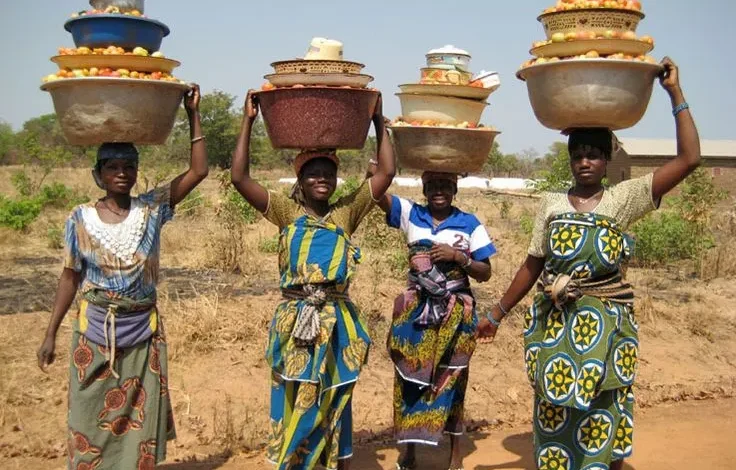Unusual Award n.13: Extreme Gluteal Proportions in African Woman

Introduction to Unusual Awards
Unusual Award n.13: Extreme Gluteal Proportions in African Woman, Unusual awards, often showcasing unique physical or cultural features, provide insight into society’s ever-evolving standards of beauty and appreciation for diversity. Unusual Award N.13, celebrating extreme gluteal proportions in African women, stands as a testament to the fascination with body diversity and the cultural influences that shape body ideals. But what does this award signify, and why has it captivated global attention? Let’s delve into the significance, origins, and nuances of this unique celebration of beauty.
What Are Extreme Gluteal Proportions?
The term extreme gluteal proportions refers to a body shape characterized by a significantly large, rounded posterior. While gluteal proportions vary widely across populations, some individuals, particularly in specific African communities, naturally exhibit prominent gluteal features. When these proportions exceed typical measurements, they become classified as “extreme,” a quality that has gained both cultural recognition and international intrigue.
Historical Perspectives on Gluteal Aesthetics
Admiration for rounded gluteal features is not new. In fact, societies around the world have held various body types in high esteem, from ancient Venus figurines to artwork from different African tribes depicting curvaceous women. In these traditions, ample gluteal proportions often symbolized fertility, strength, and beauty, signifying a body that bore life and resilience. This history shows that the fascination with gluteal aesthetics is deeply rooted and has transcended generations.
The African Context
Certain African regions, including countries like Namibia and Nigeria, are known for populations with more pronounced gluteal proportions. This unique feature is not only respected but is often considered an indicator of beauty and femininity within these cultures. Social norms in these areas celebrate curvaceousness as a natural and desirable trait, leading to a local culture that fully embraces and even awards individuals who exhibit these proportions.
Ethnicity and Genetic Factors
Why are extreme gluteal proportions more prevalent in African populations? Genetics plays a significant role, as some African ethnicities, such as the Khoisan and Bantu, exhibit physical traits that enhance gluteal prominence. This genetic trait, often attributed to steatopygia, allows for the accumulation of fat in the gluteal region, a trait that may have offered evolutionary advantages in arid environments by providing energy storage.
Cultural Celebrations of Body Proportions
Across Africa, curvaceous body types are celebrated through music, dance, art, and even fashion. Songs often praise the rounded form of a woman, and traditional dances emphasize hip and gluteal movement, reinforcing the cultural appreciation of these features. Beauty pageants and contests in regions like Botswana have categories specifically recognizing curvy women, underscoring the cultural celebration of natural body proportions.
The Role of Diet and Lifestyle
Diet and lifestyle are also crucial factors in body shape. African diets, which often include nutrient-rich staples such as yams, plantains, and legumes, contribute to the natural curvaceousness seen in many African women. Physical activity, including daily tasks that involve walking, carrying loads, or manual labor, may also enhance body shape, contributing to a natural prominence in the gluteal region.
Popular African Communities Known for Curves
Certain African communities, including the Herero in Namibia and women in parts of West Africa, are known for their distinctive curves. These regions, celebrated for their unique physiques, are often the subject of fascination for anthropologists and beauty enthusiasts alike. Women from these areas become symbols of natural beauty and body diversity, proudly representing their cultural heritage.
Fashion and Beauty Influence
In recent years, African fashion has increasingly embraced and highlighted curvaceous body types. Designers celebrate curves with fitted clothing that accentuates the gluteal region, from traditional wraps and dresses to modern styles. This fashion trend not only reinforces the appeal of natural body types but also empowers women to embrace their unique physiques with confidence and pride.
Media Representation and Body Ideals
Media portrayal of African women with extreme gluteal proportions has grown over the years, with social media platforms providing visibility to unique body types globally. Platforms like Instagram and YouTube offer African influencers and models opportunities to showcase their natural beauty, inspiring women worldwide to embrace their body shapes and challenging conventional beauty standards.
Medical and Health Implications
While extreme gluteal proportions can be a celebrated trait, they also come with certain health considerations. Extra weight in the gluteal region can impact spinal alignment, hip movement, and overall balance. Health professionals sometimes offer guidance on maintaining muscle strength to support the body’s natural shape, ensuring health and wellness are prioritized along with beauty.
Modern Celebrations and Social Media
Social media has amplified the celebration of extreme gluteal proportions, creating space for unique body types to gain appreciation. Hashtags celebrating African beauty and curves have drawn millions of followers, empowering women to celebrate their bodies without fear of judgment. This online trend supports body positivity and makes unusual awards like this one more accessible and visible globally.
Scientific Studies on Body Proportions
Scientific research has long studied body proportions across populations, often focusing on the African diaspora’s unique physical traits. Studies highlight how genetic factors and environmental adaptations contribute to these body shapes, sparking discussions on the importance of diversity in body type representation and health.
Controversy and Sensationalism
The admiration for extreme gluteal proportions is not without its controversies. Some critics argue that such awards may fetishize or sensationalize African women’s bodies, shifting focus from beauty to objectification. These debates encourage a more thoughtful approach to celebrating unique body types, ensuring admiration remains respectful and culturally sensitive.
Psychological Impact on Individuals
For women with extreme gluteal proportions, societal attention can have both positive and challenging effects. On one hand, receiving admiration can boost confidence and self-esteem; on the other, it may lead to unwanted scrutiny. Cultural acceptance and community support are essential for these individuals to maintain a positive self-image in the face of societal pressure.
Events Recognizing Unique Body Types
Awards like Unusual Award N.13 aren’t alone in recognizing unique body types. Across Africa, various events celebrate body diversity, with pageants that emphasize natural beauty and events that recognize women’s cultural contributions. These celebrations encourage inclusivity and highlight the diversity of African beauty.
Changing Beauty Standards Globally
As global beauty standards evolve, there’s an increasing appreciation for diverse body types. Western media and fashion are slowly moving away from rigid ideals, with a growing emphasis on authenticity and inclusivity. The influence of African beauty, including extreme gluteal proportions, continues to shape global standards, paving the way for a more inclusive definition of beauty.
Conclusion
Extreme gluteal proportions in African women represent a unique and celebrated aspect of body diversity, both culturally and globally. Unusual Award N.13 honors these women, recognizing the beauty and strength found in natural physiques that reflect the diversity of the human form. As body standards continue to shift, awards like these help the world embrace and celebrate uniqueness, fostering respect and admiration for beauty in all its forms.
FAQs
- What are extreme gluteal proportions?
They refer to naturally larger and rounded gluteal features often seen in certain African populations. - Is there a genetic reason for these body proportions?
Yes, genetic factors, including traits like steatopygia, contribute to these unique body shapes in specific African communities. - Are there health implications to extreme gluteal proportions?
While generally celebrated, they can come with health considerations like joint stress, requiring proper muscle support. - How are extreme gluteal proportions viewed in African culture?
In many African communities, curvaceousness is admired and celebrated as a sign of beauty, fertility, and strength. - How has social media impacted the visibility of extreme gluteal proportions?
Social media has amplified appreciation for diverse body types, empowering women worldwide to embrace their unique physiques.



